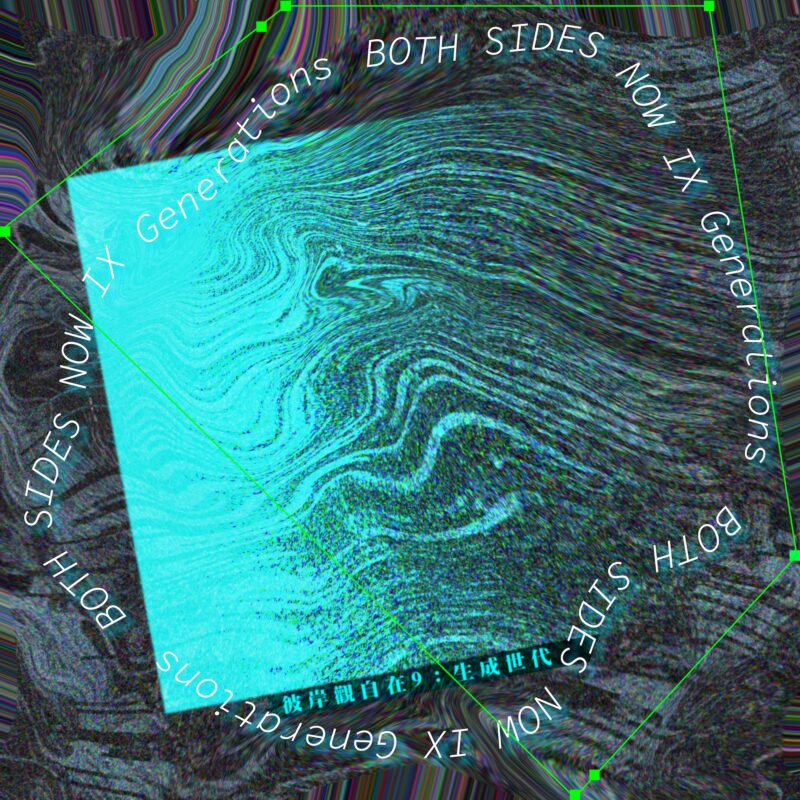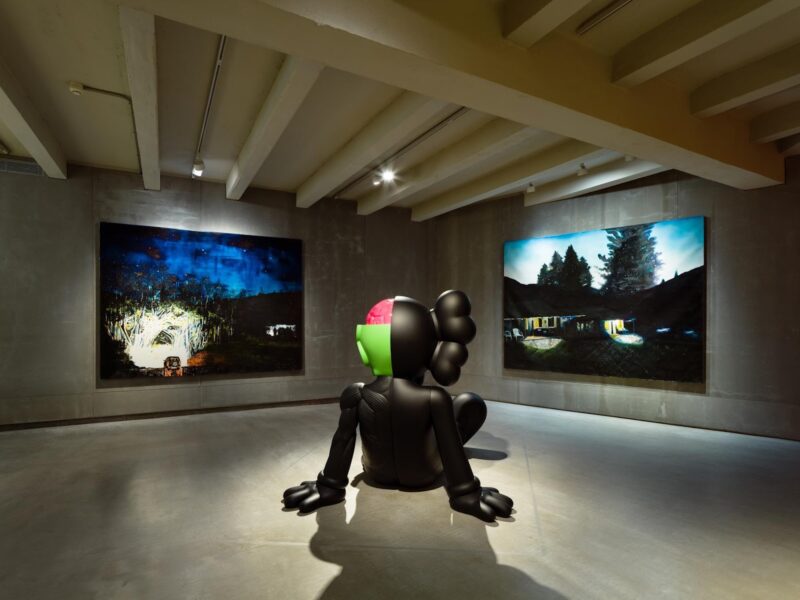This year will be the year of AI at Serpentine
Hans Ulrich Obrist
Serpentine Arts Technologies has announced their 2024 programme. The department will focus on developing AI systems in conversation with artists and the public by leveraging creative R&D and art production.
2024 marks a decade since the establishment of Serpentine Arts Technologies, a department that has combined convening, commissioning and creative R&D to support the development of an art and technology ecosystem with a public mission.
Since 2014, Serpentine Arts Technologies has developed AI projects with Cécile B. Evans, James Bridle, Jenna Sutela, Ian Cheng, Pierre Huyghe and Hito Steyerl that have prefigured subsequent technological developments in the field. The establishment of Creative AI Lab in collaboration with King’s College London in 2019 offered a space for research into AI systems from artistic and cultural perspectives and interests, generating a solid foundation for thought leadership on this topic as AI gains increasing mainstream attention in 2024.
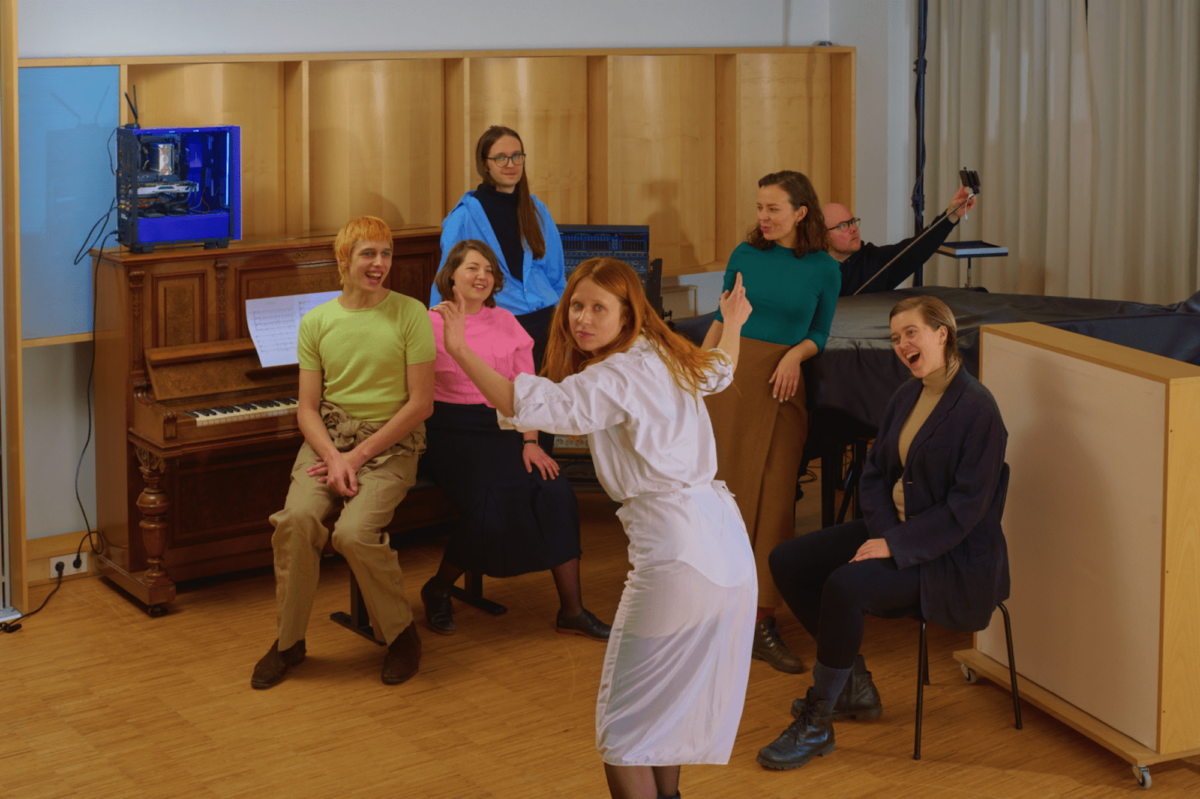
Presented at Serpentine North in October 2024, Holly Herndon and Mat Dryhurst will present a new project and exhibition, envisaging the art institution as a laboratory for the development of new technologies. The project will centre on the collective creation of new vocal datasets, governance frameworks and vocal models. In so doing, the show positions the process of data collection and model training as forms of artmaking. Herndon and Dryhurst will premier this research and an early demo on stage at TED 2024 in April.
This will coincide with Future Art Ecosystems 4: Art x Public AI, March 2024’s strategic briefing that will break down the implications of AI for the cultural sector and offer strategies for claiming greater agency within AI-driven economies.
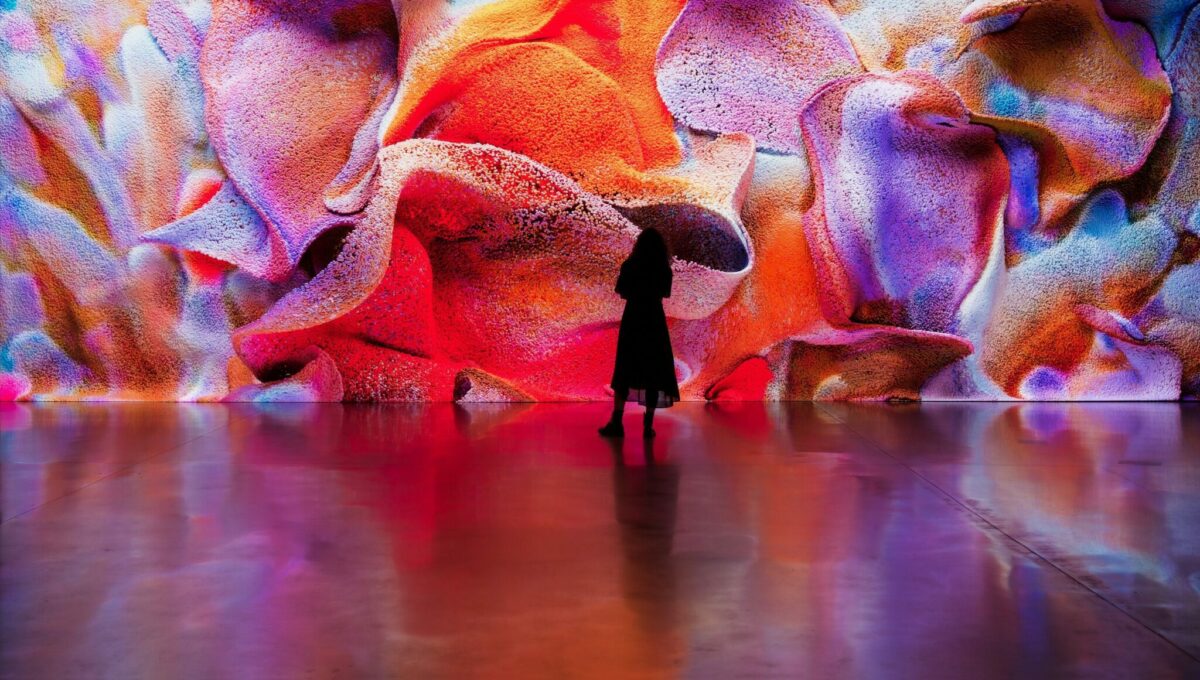
Opening on 16th February 2024 to the public, Echoes of the Earth: Living Archive, an exhibition of new and recent works by artist and director Refik Anadol will be staged at Serpentine North.
Known for his digital artworks and large-scale public installations that present real-time, generative visual environments, Anadol’s collaborative creative process with AI plays on human perception of legible and alien forms.
Serpentine Arts Technologies is thrilled to announce that its annual strategic briefing Future Art Ecosystems Vol. 4 will be released in March. With AI as its theme, the report will initiate a year of Serpentine North exhibitions by artists pushing the boundaries of experimentation with machine learning models and training data, including Refik Anadol, Holly Herndon and Mat Dryhurst. This year marks Serpentine Arts Technologies’ 10th Anniversary, and we are proud to continue platforming digital artists so that they have a seat at the table as powerful new technologies play increasingly important roles in shaping the future of society.
Bettina Korek, CEO, and Hans Ulrich Obrist, Artistic Director, Serpentine,
HOLLY HERNDON and MAT DRYHURST | SERPENTINE NORTH | 3rd October 2024 – January 2025
Named by TIME Magazine as among the 100 most influential people in AI, Herndon and Dryhurst are renowned for their pioneering work in music, machine learning and software development. At Serpentine they will present a participatory sonic experience of AI-systems-building.
The exhibition design will be developed in collaboration with sub – the architecture studio led by Niklas Bildstein Zaar best known as the talent behind the Balenciaga Architecture Programme.
Herndon and Dryhurst are authors of a synthetic voice system, Spawn, that uses live performances and intimate singing groups to collect voice data and evolve a collective human-machine voice. They have also developed Holly+ a tool and a web3 organisation that gives access to Herndon’s digital voice, and new economic models for creators. Most recently, the duo co-founded Spawning.ai with the mission to develop tools and strategies for artists to assert their agency in a creative economy where AI is the new normal.
Serpentine Arts Technologies has spent the last decade developing the capabilities that demonstrate the value of the public art sector as a vital site of creative R&D and experimentation with emerging and advanced technologies for and with the public. Future Art Ecosystems 4: Art x Public AI builds on this vision and once again offers a strategic vision for the sector in the age of AI. 2024’s collaboration with Holly Herndon and Mat Dryhurst also builds upon our legacy of Serpentine-led productions with artists including Gabriel Massan, Ian Cheng and Hito Steyerl, to create immersive, engaging and complex commissions that create a nuanced dialogue about the challenges and opportunities that these technologies, like emerging AI systems, represent to culture and society.
Kay Watson, Head of Arts Technologies
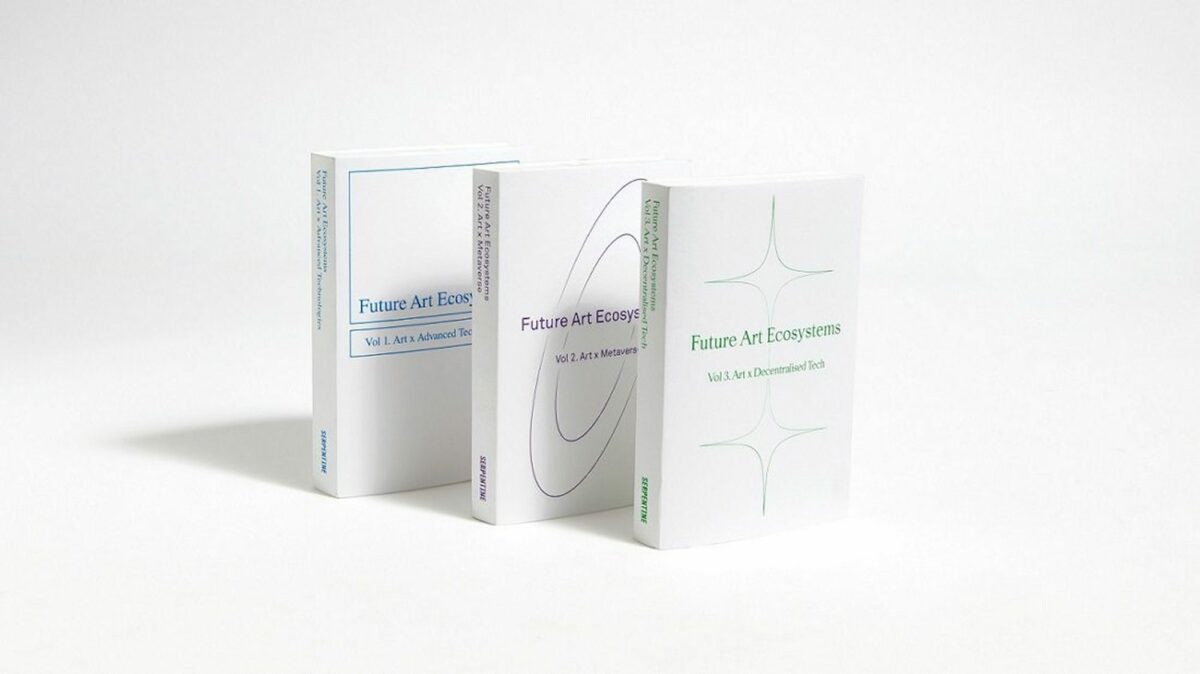
In March 2024, Serpentine Arts Technologies will release the fourth volume of their annual strategic briefing, Future Art Ecosystems (FAE).
Born out of a need to inform ecosystem design for art and advanced technologies (AxAT), Future Art Ecosystems (FAE) identifies the dynamics and opportunities within emerging technology spaces for building 21st-century public cultural infrastructure: systems required to produce, distribute and financially support AxAT practices that are responsive to the most urgent techno-social issues of our time. The past issues have accurately predicted a variety of phenomena that now dominate the art and technology landscape, from the changing role of art patronage with the expansion of the tech sector (FAE1) to emergence of a new artist-led technological and commercial practice as represented by artist Refik Anadol (FAE1), and the use of the art space as a test case for new technology-driven economic and governance models as represented by Holly Herndon and Mat Dryhurst (FAE3).
With Art x Public AI, FAE4 takes insights from leading voices in art, tech industry and policy to map out the stakes in building and integrating various elements of AI systems within the cultural domain. The aim is to offer conceptual tools for practitioners and organisations to navigate this technological landscape and to develop pragmatic approaches to creative and organisational strategies. The research is led by the Creative AI Lab, a collaboration with King’s College London’s Digital Humanities Department, and the Legal Lab at Serpentine.
Some of the key questions that FAE4 will address include:
-What are the different ways in which AI systems feature in artistic practices, and as a result how should these practices be supported?
-What are the ownership issues that AI is creating for artists and arts organisations? Are existing legal protections sufficient in addressing these or do we need new frameworks and categories?
-How can AI systems transform the relationship between cultural institutions and the datasets they manage?
Insights from Future Art Ecosystems 4 include:
-Artists who approach their workflow as an evolving set of capabilities are able to integrate AI tooling to expand their practices. Some will develop bespoke AI tooling, which will also increase their economic agency.
-Data governance know-how will become a critical capability for all organisations as all data becomes training data for evolving AI systems. Cultural institutions need to develop data governance strategies that align with their missions.
-Just as art and culture offered an early use-case for NFTs and aided in public comprehension of new blockchain technologies, a similar opportunity exists in relation to AI given that AI is a cultural phenomenon as much as it is a technical one.
FUTURE ART ECOSYSTEMS 4: ART X PUBLIC AI will launch at an event hosted in London on 19th March 2024.
About
Berlin-based artists and technologists Holly Herndon (USA) and Mat Dryhurst (UK) are renowned for their pioneering work in music, machine learning, software development and organisational experimentation. Herndon’s and Dryhurst’s expansive practice has led to multiple precedent-setting projects where the technical systems that underwrite the creative output are artworks unto themselves. They publish their studio research openly through the Interdependence podcast, and recently co-founded Spawning, an organisation building a consent layer for AI. Their critically acclaimed musical works are released through 4AD.
This year they were named ‘100 most influential voices in AI’ by Time Magazine. They have sat on ArtReview’s Power 100 list since 2021. In 2022, they were awarded the 2022 Ars Electronica STARTS prize for digital art.
Herndon holds a Ph.D in Computer Music from Stanford CCRMA, Mat is largely self-taught. They have held faculty positions at NYU, the European Graduate School, Strelka Institute and the Antikythera Program at the Berggruen Institute.
Sub is an architecture office founded by Niklas Bildstein Zaar and Andrea Faraguna in 2017. Based in Berlin, sub practices design through a synthesis of image, research, technology and architecture. Clients are considered partners in a dialogue – from the fields of art, fashion, music, commerce – in an ongoing exploration of contemporary rituals. Comprising practitioners from an array of disciplines and cultures, sub simultaneously addresses several scales spanning time and space. Media is considered a material, and physical materials are translated in the digital realm. Sub’s output emerges from copious research – via the humanities to advanced fabrication techniques. With completed projects in numerous global locations, sub has introduced a worldbuilding language that turns sociocultural dynamics into sensually dissonant environments.
Since 2019, the Creative AI Lab has been a space for long-term research by Serpentine Arts Technologies and the King’s College London Department of Digital Humanities into artistic practices working with AI/ML. The lab has built and maintained a database of creative AI tools and resources (creative-ai.org), facilitated PhD research, conducted academic research resulting in papers and talks, produced prototypes utilising natural language processing and game design, and worked with numerous artists including ISCRI/0rphan Drift, dmstfctn, Danielle Brathwaite-Shirley, Hanna Haaslati, Agnieszka Kurant. The lab has partnered with Grey Area (USA), NYU Digital Theory H-Lab (USA), Rhizome (USA).
Serpentine’s Arts Technologies programme explores the impact of technology through art, research and experimental projects. It supports artists to produce projects that use advanced technologies and convenes people working in art, technology, law, policy, and academia to share knowledge and develop new ideas about technology and society.
The foundation of Serpentine Arts Technologies’ programme is in an evolving R&D Platform that nurtures innovation for future art ecologies by securing a crucial institutional space for pragmatic interventions and necessary risk-taking at the intersection of art, science and technology. This is achieved through dedicated research labs (Blockchain Lab, Creative AI Lab, Legal Lab, Synthetic Ecologies Lab), orientation and knowledge-sharing with the wider sector through Future Art Ecosystems, and co-facilitation of a national Creative R&D Working Group.??



